Research Funded
CPFF’s investment in clinical research fellowships aims to advance research and develop more respiratory specialists to improve care, as well as expand access to care, for people living with pulmonary fibrosis (PF).
Each of the fellows are respirologists and are required to spend at least 75 percent of their time conducting research. The rest of their time is spent caring for patients, as well as teaching and participating in other clinic activities.
Congratulations to this year’s CPFF Robert Davidson Fellows.
Dr. Albina Tyker


Dr. Na’ama Avitzur
Dr. Yassmin Behzadian

Visit the Research section of CPFFs website for more information about CPFFs fellowship program and research grants, previous fellows and the results of completed research projects.
DR. alec campbell
For the second year of his two-year fellowship, Dr. Campbell will continue working with Dr. Chris Ryerson and Scott Tebbutt, PhD, at the University of British Columbia, and providing care to ILD patients at St. Paul’s Hospital in Vancouver, in addition to conducting his research. He will continue work on his research project examining the molecular interactions within individual cells, a technique known as single-cell RNA-sequencing (scRNAseq), to see if there are genetic markers in the blood that could help diagnose ILD earlier, more reliably, and more safely than is currently possible.
Click here to read about Dr. Campbell’s work during the first year of his fellowship.


DR. kirsten nesset
Dr. Nesset will undertake her fellowship at the Firestone Institute for Respiratory Health (FIRH) at McMaster University under the supervision of Drs. Martin Kolb, Nathan Hambly, Gerard Cox, and Ciaran Scallan. In addition to caring for FIRH patients, she will begin her studies in the two-year, part-time, online Master’s program in Health Professions Education through the Maastricht-Canada program at Western University. The bulk of her time (75 percent) will be spent as the lead investigator of a project exploring how frailty might impact patient engagement and satisfaction in remote monitoring programs.
DR. ALEC CAMPBELL


DR. AMANDA GRANT-ORSER

DR. LEIGH MINUK
Drs. Shane Shapera and Jolene Fisher at University Health Network (UHN), Toronto, will guide and mentor Dr. Leigh Minuk as she undertakes clinical work at Toronto General Hospital’s ILD clinic and her ILD research.
DR. KELLY SUN
Under the supervision of Dr. Shane Shapera at the University of Toronto (U of T), Dr. Sun will care for patients at the Toronto General Hospital ILD clinic.


DR. DANIEL MARINESCU
Under the supervision of Dr. Chris Ryerson at UBC, Dr. Marinescu will move into his second-year as a CPFF fellow, and continue performing his 20 percent of clinical duties at St. Paul’s Hospital in Vancouver.
DR. COLIN ADAMS
Dr. Colin Adams will fulfill his fellowship clinical work at the ILD clinic at Toronto General Hospital.
His primary project will be a Canadian Registry for Pulmonary Fibrosis (CARE-PF) study to develop a new prognostic score for all fibrotic ILD in conjunction with Dr. Jolene Fisher and Dr. Chris Ryerson at UBC.


DR. AMANDA GRANT-ORSER
Dr. Amanda Grant-Orser will treat patients at the University of Calgary’s ILD Clinic located at South Health Campus as part of her fellowship. She will also pursue a Masters in Clinical Epidemiology.
DR. SARAH MACISSAC
Dr. Sarah MacIsaac will be dedicating 25 percent of her fellowship time providing care to patients at the Firestone Institute for Respiratory Health (FIRH), McMaster University, in Hamilton.
Her research time will include the completion of a Master’s degree in Public Health, as well as several research projects.


DR. DANIEL MARINESCU
Dr. Daniel Marinescu will perform the clinical duties of his fellowship at St. Paul’s Hospital in Vancouver. While pursuing his Master’s in Health Science at UBC, he will be involved in several research studies.
His primary project will examine the association of genetic risk factors with detailed radiological and histopathological findings across various ILD subtypes.
DR. CIARAN SCALLAN
Dr. Ciaran Scallan at the Firestone Institute for Respiratory Health in Hamilton, Ontario, was awarded $20,000 to to study the feasibility of using a sputum (phlegm) guided approach to treat chronic cough in PF patients using inhaled corticosteroids and azithromycin (a macrolide antibiotic) during a 12-week period.


DR. LEE FIDLER
Dr. Lee Fidler of Sunnybrook Health Sciences Centre in Toronto was awarded $20,000 to investigate the incidence and prevalence of rheumatoid arthritis interstitial lung disease (RA-ILD) in Ontario. You can read more about this research in the June 2022 issue of our newsletter.
More Research Funded
Dr. Stacey Lok of Saskatchewan received a one-year $90,000 Robert Davidson Research Fellowship for 2019-20.

As a clinical research fellow at the University of Calgary, she spent about 20 per cent of her time caring for ILD patients, gaining valuable ILD clinical experience. The bulk of Dr. Lok’s time was devoted to research. Her main research project was titled: “Malignancy Risk Associated with the use of Mycophenolate Mofetil in Interstitial Lung Disease.”
Mycophenolate mofetil is a medication used to treat various forms of ILD such as hypersensitivity pneumonitis, which is triggered by an environmental exposure, and ILD secondary to autoimmune diseases, such as scleroderma, rheumatoid arthritis, lupus and myositis. It is not used to treat IPF. “This medication is known to increase the risk of cancer when used as an anti-rejection therapy following organ transplants,” said Dr. Lok, “But ILD patients are different. I’m investigating the cancer risk of mycophenolate mofetil in ILD patients.”
Dr. Lok used the Canadian Registry for Pulmonary Fibrosis (CARE-PF) database to analyze the risk of cancer for people with ILD, who have received Mycophenolate Mofetil across Canada. “I believe this is an important clinical question to help our patients with ILD weigh the benefits and risks of this therapy and for our clinicians to be able to counsel patients on cancer risk with the appropriate data.”
She and her colleagues reviewed the database to add the information needed, including new or recurring cancers, for the analysis for this study.
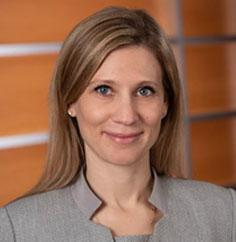
Dr. Jolene Fisher, Clinical Investigator with the University Health Network (UHN) and Assistant Professor at the University of Toronto (U of T) was awarded a $20,000 CPFF Research Grant for 2019-20.
Her primary objective was to determine the current incidence, prevalence, mortality and healthcare utilization of IPF in Ontario. This research aimed to act as a foundation for health policy decision making, advocacy and future research designed to improve the care and health outcomes of people living with IPF.
This led to a study of 1,285 patients, older than 18, who enrolled in the Canadian Registry for Pulmonary Fibrosis (CARE-PF) during its first 18 months (January 2016 to July 2017), which provided researchers with a broad overview of the characteristics of the disease in Canada.
“We found that more than 20 per cent of patients had what we call unclassifiable ILD, even after being assessed at an expert ILD centre,” said Dr. Fisher. “This was a surprise to me. It means that after all of the usual testing and a discussion involving several ILD doctors, the cause or type of pulmonary fibrosis couldn’t be determined. It’s frustrating for patients and physicians when we can’t determine the type of fibrosis with all of the usual testing.”
Other notable findings were that comorbidities (other medical conditions) and exposures are very common among all types of pulmonary fibrosis.
Baseline characteristics and comorbidities in the Canadian Registry for Pulmonary Fibrosis
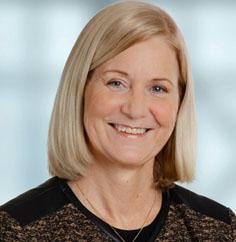
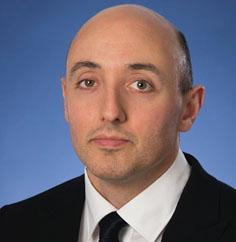
Dr. W. Darlene Reid, Professor at U of T and Dr. Dmitry Rozenberg, Clinical Scientist – Respirology at Toronto General Research Institute and Assistant Professor at U of T. were awarded a $20,000 CPFF Research Grant for 2019-20.
They proposed to study diaphragm and thigh muscle strength and their respective sizes during hospitalization of 20 ILD patients while in hospital for acute exacerbation in interstitial lung disease (AE-ILD) and 3 months after discharge. This aimed to help better understand how these muscles change. In addition, they measured if low oxygen levels resulting from whole body stress could damage skeletal muscle. Lastly, they examined how diaphragm and thigh muscle size and function could affect mobility, daily function, quality of life, need for hospital re-admission and three-month survival.
This was the first study to describe the changes in respiratory and limb muscles during hospitalization of people with IPF. Their findings of how muscle structure and function change during hospital aim to help with exercise planning, home supports and may ultimately help improve the quality of life of those living with IPF.The interplay of physical and cognitive function in rehabilitation of interstitial lung disease patients: a narrative review
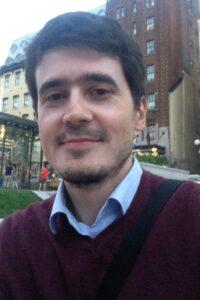
The Victoria Hospital, London, was awarded a $14,029 Research Grant in 2017 to study a new staging system for IPF.
The study, conducted by Dr. Marco Mura and 6 other researchers, involved 123 patients with IPF and investigated the relationship between disease progression determined by high resolution CT scan (HRCT) and functional decline in IPF. It sought to confirm that a simple HRCT fibrosis visual score is a reliable predictor of mortality in IPF, when conducted regularly over time, and to determine which pulmonary function tests best reflect survival rates similar to the HRCT results.
“Overall, the study results were relatively as expected”, said Dr. Mura. “Patients showing an increase of more than seven per cent in lung fibrosis over the study period, on average, had a higher chance of dying. During the 3 years, 43 patients died and 11 underwent a lung transplant. Both an HRCT showing a progression of fibrosis and a decline in FVC predicted survival independently and significantly.”
What do the results mean for patients and physicians? “It appears best to use both HRCT and FVC to assess disease progression in IPF,” explains Dr. Mura. “These are accessible and relatively affordable tools that can be used to make changes to treatment and refer patients to a transplant waiting list. However, concerningly, accuracy for predicting survival is still only at about 61 to 66 per cent using a combination of both measurements, meaning that we still need to do better, adding other affordable tools such the six-minute walk test to our evaluation.”
The study reinforced that HRCT is a fairly reliable tool and is one part of a broader investigation into ways to improve the determination of disease progression in IPF.

The St Paul’s Hospital, Vancouver, was awarded a $19,490 Research Grant in 2017 for research into physical activity predictors in fibrotic lung disease.

The St Joseph’s Hospital Foundation was awarded a $2,500 research grant in 2017 for general research.

Dr. Veronica Marcoux, from Saskatoon, received a one-year $20,000 Research Fellowship for 2016-17.
The fellowship sought to partially fund of a 12-month ILD Fellowship Program. Dr. Marcoux sought to develop a Pulmonary Fibrosis Program in Saskatoon and Dr. Kerri Johannson and Dr. Charlene Fell were committed to providing Dr. Marcoux with advanced clinical ILD training and mentorship for setting up a functioning program in Saskatoon.
During her fellowship, Dr. Marcoux was engaged in multiple research projects at the University of Calgary. She has an interest in quality assurance and relished the opportunity to start building a database of Saskatchewan people affected by pulmonary fibrosis, so that further research can be facilitated and potentially benefit patients in the future.

The University Hospital of Edmonton, Alberta, was awarded a $100,000 Grant in 2016, in order to fund a dedicated ILD speciality nurse practitioner at the KEC Multidisciplinary ILD Clinic to work directly with Dr. Meena Kalluri the clinic director.
This initiative helped fill a significant care gap in Alberta for pulmonary fibrosis patients. The grant was awarded by CPFF in partnership with Boehringer Ingelheim.
Patients benefited by decreased wait times to see a Pulmonary Fibrosis specialist as well as increased patient support and satisfaction for patients and caregivers, thus optimizing outcomes.
CPFF funded the nurse-coordinator position for the clinic for two years, with the understanding that the position would be funded by Alberta Health Services going forward. CPFF funding on March 31, 2019.

St Joseph’s Hospital, Hamilton, was awarded a $30,000 Research grant to study the Role of Heath Shock Proteins in IPF.
While the role of heath shock proteins in ILDs continues to be studied, here’s an excerpt from the latest abstract from a study by Dr. Martin Kolb, Dr. Pierre-Simon Bellaye and 5 other researchers named “Extracellular Heat Shock Proteins as Therapeutic Targets and Biomarkers in Fibrosing Interstitial Lung Diseases“.
Given the vast number of progressive fibrosing Interstitial Lung Diseases (ILDs) and the disparities in clinical patterns and disease features, the course of these diseases is heterogeneous and cannot accurately be predicted for an individual patient. As a consequence, the discovery of novel biomarkers for these types of diseases is a major clinical challenge. Heat shock proteins (HSPs) are molecular chaperons that have been extensively described to be involved in fibrogenesis.
Their extracellular forms (eHSPs) have been recently and successfully used as therapeutic targets or circulating biomarkers in cancer. The current review will describe the role of eHSPs in fibrosing ILDs, highlighting the importance of these particular stress proteins to develop new therapeutic strategies and discover potential biomarkers in these diseases.

The University of Calgary was awarded a $20,000 Grant in 2016 for hiring of research clinician.

The International Colloquium on Lung and Airway Fibrosis (ICLAF) was awarded a $5,500 Sponsorship for clinical researchers in 2016.

The St Joseph’s Hospital Foundation was awarded a $2,500 research grant in 2017 for general research.
Dr. Alyson Wong received a two-year $180,000 Robert Davidson Research Fellowship for 2018-20.

At the time, she was involved in several interstitial lung disease (ILD) research projects and was completing a Master of Health Science at the University of British Columbia (UBC). She also spent time treating patients in ILD clinics at St. Paul’s Hospital in Vancouver, shared her findings with colleagues at local and international medical conferences and engaged with the local Pulmonary Fibrosis support group.
The goal of her first research project was to evaluate the economic impact of ILD in BC and determine sources of diagnostic delay and the associated impact on patient outcomes. The aim was to identify health care inefficiencies that, when addressed, reduced time to diagnosis, improved patient outcomes and reduced health care costs.
Dr. Wong’s second research project evaluated whether the presence of other medical conditions in patients with PF has an impact on lung function by using the Canadian Registry for Pulmonary Fibrosis (CARE-PF). This was a multi-centre, national study using patient data from five provinces.
Her third research project involved identifying what features respirologists, radiologists and pathologists use to help distinguish chronic hypersensitivity pneumonitis from IPF. “It is important to make an accurate diagnosis and distinction between these two diseases because the treatments are different and could be harmful if used in a patient with the wrong diagnosis,” said Dr. Wong.

Dr. Andrei Vagaon, respirologist at Toronto General Hospital’s (TGH) Interstitial Lung Disease (ILD) clinics, received a one-year $90,000 Robert Davidson Research Fellowship for 2018-19.
He has implemented changes and developed new tools to improve the lives of people living with PF in Canada, and potentially the world. He has also improved his clinical skills as a respirologist and plans to help improve access to care in the Toronto area.
During his fellowship year, he has broadened his knowledge of how to approach and treat patients with PF. He has already been applying this knowledge in his own Toronto practice, helping patients live their best lives with the disease.
“There is something very basically human about meeting with people living with ILD,” said Dr. Vagaon, “When you cannot breathe, nothing else matters. It’s a question of survival and I want to help.”
The teaching, mentorship and guidance he has received at the TGH clinics has prepared him well to pursue his plan to partner with other ILD-trained physicians to start a dedicated clinic in another part of the city. “The increasing needs for care are likely to outpace the increase in resources,” he says. “I believe increasing ILD (Interstitial Lung Disease) clinic capacity is paramount to ensuring timely patient access.”
Dr. Kjetil Ask, Associate Professor, McMaster University, Firestone Institute for Respiratory Health, was awarded a $20,000 CPFF Research Grant for 2018-19.

The study completed by Dr. Kjetil Ask and PhD student Olivia Mekhael, shed new light on how certain cells in the circulatory system make their way into the lungs and activate scar-producing cells, creating fibrotic tissue in the lungs.
They found that the cells which activate scar-producing cells were more prevalent in the IPF lung tissues than in the normal control lung tissues. They occurred at different levels, but they were more abundant than in the control lung tissues. They also found that the pre-cursor to these activation cells was present at higher levels in the blood of people with IPF, than in people without IPF.
“What we have learned from this study is that it’s all about location, location, location,” says Dr. Ask. “The right delivery of a medication, through the bloodstream or directly into the lungs, may target different processes that all contribute to the progressive nature of the disease, and in the end block the fibrotic process ongoing in the lung. Finding the right targets and the right delivery route of medications aimed to stop the different cells and molecular processes involved in the progression of the disease may give rise to more combination therapies, targeting different biological processes.”
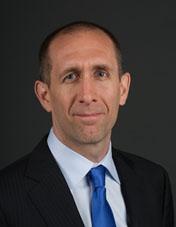
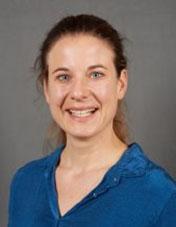
Dr. Christopher Ryerson, Associate Professor, UBC, Centre for Heart Lung Innovation at St. Paul’s Hospital was awarded a $20,000 CPFF Research Grant for 2018-19.
Alongside his co-principal investigators Dr. Sabina Guler, a post-doctoral fellow at UBC, he performed a study of 115 people with ILD, including 40 people with IPF which found a significant association between the severity of ILD and breathlessness, with muscle mass, strength and performance. This was the first time a study has been conducted involving with people with ILD, outside of the lab.
Participants were assessed for their disease severity and muscle mass. They also undertook walk and grip tests. The association between the disease and muscle mass and function is just the first step involving patients in this area of research.
“Although we have demonstrated an association, it’s a chicken and egg question of which occurs first,” said Dr. Ryerson. “ILD frequently leads to inactivity and muscle weakening as people avoid the discomfort of breathlessness brought on by physical activity. Or, it is possible the disease itself, with its risk factors for muscle disease, including alterations in sex and growth hormones, leads to muscle deterioration. Of course, it could also be a combination of the two, or other factors entirely. These are the next research questions we need to explore.”
According to the study’s authors, this study’s results do have potential implications for the design of exercise training programs for patients with ILD. Individualized exercise programs, which provide enough muscle stimulation, prior to the onset of breathlessness, may improve muscle performance.



